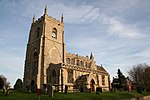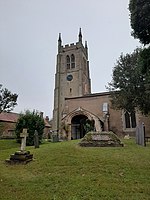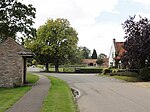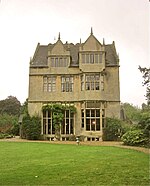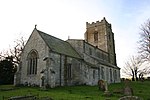Aslackby Preceptory
1192 establishments in EnglandCastles and fortifications of the Knights TemplarChristian monasteries established in the 12th centuryEngland in the High Middle AgesHistory of Lincolnshire ... and 2 more
Medieval sites in EnglandMonasteries in Lincolnshire

Aslackby Preceptory in Lincolnshire lay to the south-east of Aslackby Church. Until about 1891 a tower, possibly of the preceptory church, together with a vaulted undercroft, survived as part the Temple farmhouse. Temple farmhouse was subsequently rebuilt and a 15th-century window and a stone pinnacle remain in the garden
Excerpt from the Wikipedia article Aslackby Preceptory (License: CC BY-SA 3.0, Authors, Images).Aslackby Preceptory
Temple Road, South Kesteven Aslackby and Laughton
Geographical coordinates (GPS) Address Nearby Places Show on map
Geographical coordinates (GPS)
| Latitude | Longitude |
|---|---|
| N 52.8595 ° | E -0.3878 ° |
Address
Temple Road
Temple Road
NG34 0HJ South Kesteven, Aslackby and Laughton
England, United Kingdom
Open on Google Maps

